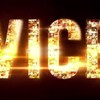Burning Man is no stranger to outlandish projects. The annual gathering in Black Rock City is equal parts music festival, art exhibition, and expressionistic utopia, attracting attendees (also known as "Burners") from all walks of life and playing host to their creative visions. Art cars, the multi-purpose visual centers of Burning Man's many camps, are the extravagant final say in performance art at the festival. Ranging from the modest to the obscene, the art cars take on on Burning Man's principle of radical expression. The only limit is the creativity of the Burners themselves.
Advertisement
This year, deep in the Mojave Desert, hundreds of volunteers working with Big Imagination Foundation is building a car of even grander scale. The 747 Project will be Burning Man's largest ever art car and as the name suggests, makes use of the flagship Boeing plane's chassis. Its lead, Ken Feldman, connected with us to shed light on the build.Optimistic, soft spoken, and yet curiously extroverted, Ken tells us how the project was born out of crude diagrams etched into the dust his second year as a Burner in 2009. Though the idea, like so many dreamt up during Burning Man, would eventually be shelved, it left behind a the desire to create something for the community. In the coming months, Charlie The Unicorn was born
Charlie the Unicorn. Photo courtesy of Big Imagination Foundation
Ken sheepishly tells me that Charlie was "not the best art car," but its construction taught him (and his friends) the necessary skills to build something much bigger. "The biggest challenge was just getting people to help," Ken explains. "Finding the correct skillsets that we needed to execute the project-and on a volunteer basis-was a real challenge." Electric purple, thirty feet tall, and spitting flames, patience and determination eventually took Charlie from from concept to realityReturning to Burning Man in 2014 as a tourist, Ken admits that the experience, free from responsibility, finally gave him the opportunity to revisit his old idea to repurpose a Boeing 747. Charlie had taught him how to make an art car possible, and with experience under his belt, the seemingly outlandish idea suddenly appeared that much more possible. On Burning Man's final day, Ken drove Charlie The Unicorn back from Burning Man (a feat in itself) with one of its caretakers, Will. Slowly slicing a path through the desert road at twenty miles an hour, the two discussed the 747 project and Will suggested contacting the bone yard in the Mojave Desert. After arriving back in Venice, California, Ken did just that.
Advertisement
Photo by Sean Zaccheo
Ken recounts his first phonecall with the bone yard to me: "Do you have 747s?" "Yeah! You want one?" After getting a price (he refused to share an exact figure, but it's in the 'lots of dollars' range) and drawing up plans, Ken took his design to a decompression party and shared it with friend and Big Imagination Foundation co-founder, Jonathan Teo, who was taken aback by the idea.A consumer app investment maven, Jonathan was an angel investor to SnapChat and has overseen deals with Instagram, Twitter, and numerous other statups. His recently-founded VC, Binary Capital, focuses on platforms that have broad ubiquity and to him, the similarities between those companies and the 747 Project were striking."There was a lot of chatter last year about Burning Man being more exclusive and less of a community," Jonathan tells me. "The sense of exclusivity is really against the festival's principles. We wanted to do something that was so big it would be community owned. Something everybody can get involved in and something that would be really crazy." One of Burning Man's core tenets is radical inclusivity and stories surrounding recent private billionaire parties do not sit well with Jonathan or the larger Burner community.
Photo by Sean Zaccheo
Since its inception, the 747 Project has become a true community project. Built by everyone and owned by no one, its army of volunteers range from NASA engineers and prominent architects to people involved in the original Boeing 747 and actual airline stewardesses. Sound designers have donated equipment, as have artisans donated materials. The plane's ultimate function, Ken shares with me, is to inspire people.
Advertisement
On a physical level, the plane is a huge, magnificent piece of architecture that overwhelms the viewer and represents the journeys from A to B that all of us take. Elaborate 3D-mapped visuals planned to illuminate the plane at night serve only to amplify this effect. On a deeper level, it is designed to make its visitors feel welcomed. Inside the plane, different interactive experiences have been built to encourage interaction with people, interaction with one's self, and self-exploration.Ken elaborates enthusiastically: "Our mission is to incubate and support projects that are bold, inspiring, and visionary. What we want people to do is be inspired to be the best that they can be. To make a change. To look at the plane and think 'if they can do something this crazy, what can I do?' It's not just a big party, it's a multi-purpose exhibit with an overarching theme that it achieves in different ways. "
Photo by Sean Zaccheo
All that lies in the future, however. There are still many hurdles to face: additional funding needs to be secured so that they can maintain the plane over the years; resources need to be continuously managed, ensuring that backers' physical and monetary donations get put to effective use; the long, long journey from the Mojave Desert to Black Rock City (a 900 km trek) still requires intensive logistical planning too.Through all of this, Ken, Jonathan, and the team at Big Imagination Foundation are hopeful about the days to come.
Advertisement
"Some people might say that it's too big or too difficult or too expensive, but to achieve what we set out to do and positively impact so many people in the process… That's worth it-you can't put a price on that."Get involved with Big Imagination Foundation on their website. More photos below.Ziad Ramley is on Twitter
Photo by Sean Zaccheo
Photo by Kevin Raich
Photo by Sean Zaccheo
Photo by Kevin Raich
A render of the completed art car. Image by Lance Powell

